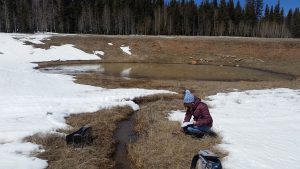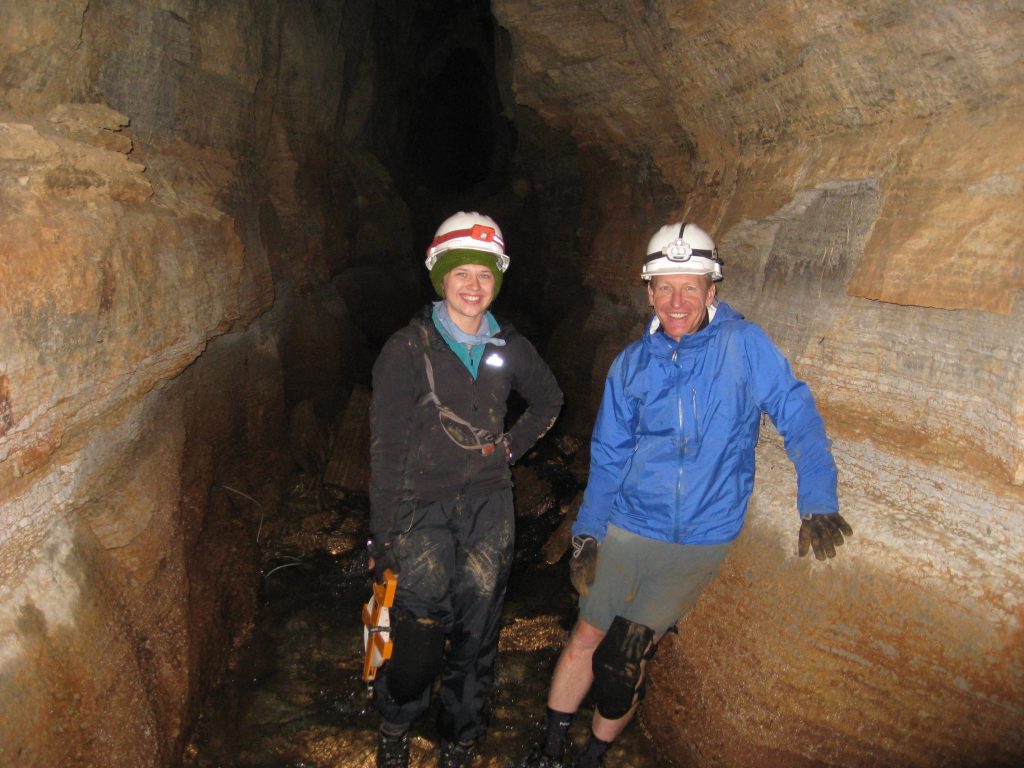By Heidi Toth
NAU Communications
Anyone who’s been in the Grand Canyon on a warm day knows one fact for sure: Water is incredibly important in that environment.
That fact is uncomplicated. Much of the rest of the conversation about water in the Grand Canyon is a little murkier.
Two researchers at Northern Arizona University—Abe Springer, a professor in the School of Earth Sciences and Environmental Sustainability, and Casey Jones, a master’s candidate studying environmental science and policy—looked at how groundwater gets to Roaring Springs, the sole source of the potable water for Grand Canyon National Park, and the bigger picture of how water moves through a karst landscape and what that means for surrounding landscapes and ecosystems.
“Studying how water moves through the Grand Canyon is imperative to protecting these valuable resources,” Jones said. “A better understanding of water transit time and spring recharge areas can assistant management practices on the Kaibab Plateau.”
The resulting studies, published in Geomechanics and Geology and Hydrogeology Journal, used food-grade dyes and other measurements to track the movement and timing of water through the Kaibab Plateau along the rim of the Grand Canyon to Roaring Springs, about five miles down. Springer and Jones sought to understand how water travels from thousands of sinkholes on the surface of the Kaibab Plateau through more than 1,000 meters of vertical rock layers before discharging at Roaring Springs. They wanted to know how long the journey took, the different flow types (quick, conduit-driven flow; intermediate fracture flow; and slow, intergranular flow), and what the recharge area is for Roaring Springs.
Springer said Ben Tobin, a researcher for Grand Canyon National Park, led the insertion of dye into sinkholes on the plateau. As the snow melted, the dye travels through the system with the groundwater and discharges into springs, where Grand Canyon National Park science staff and volunteers placed dozens of passive charcoal packets, which enabled researchers to observe the presence of dyes in the water. This method allowed Springer to approximate how long groundwater took to get from the plateau to the springs and the general idea of what paths it took to get there.
Park staff and volunteers also measured the water height and temperature in Roaring Springs over a period of time and measured the discharge. Using those data, as well as precipitation records from the Kaibab Plateau, the team created the first comprehensive graphs showing continuous changes in the discharge at Roaring Springs.

“Surprisingly, we learned that some water moves through the entire system in just days,” Jones said. “The standard interpretation of flow in this aquifer is that all of the water is hundreds to thousands of years old. We found that the slow groundwater contribution to stream flow was an entire order of magnitude less than other karstic systems.”
Knowing how specific aquifers in the region work help researchers to better understand karst aquifers through the world behave. Karst, a type of rocky landscape conducive to water flow, covers about 16 percent of the Earth’s land surface; that includes most of the Colorado Plateau around Flagstaff and the Grand Canyon. Karst aquifers also supply nearly a quarter of groundwater used for drinking worldwide. Despite their importance, these aquifers are understudied.
“This research will help inform other karst aquifers in mountainous, snowmelt-dominated locations, as well as deep aquifers that may be more difficult to access,” Springer said.
The next step in Springer’s research will be tracer studies to verify all of the sinkholes that contribute to Roaring Springs and other springs in the Grand Canyon. This work is especially critical as proposed changes to the park’s water system will take into account which sinkholes contribute to the Bright Angel Creek watershed. The next step for Jones is graduation; she’ll walk across the Skydome stage on Friday. After graduating she’ll look for work as a hydrologist.



